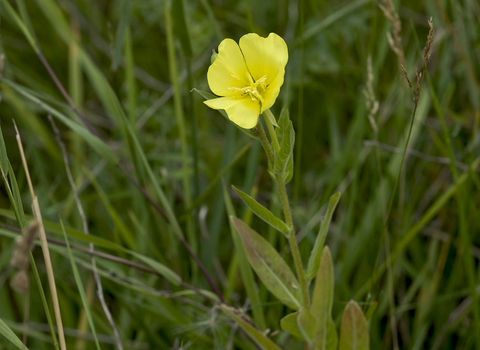
©Northeast Wildlife
Common evening-primrose
An introduced species, Common evening-primrose is now naturalised on waste ground, roadside verges and railway cuttings. It has long been used to produce the herbal remedy, evening-primrose oil.
Scientific name
Oenothera biennisWhen to see
June to SeptemberSpecies information
Category
Statistics
Height: up to 1.5mIntroduced, but naturalised species.
